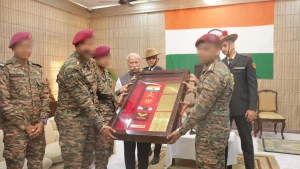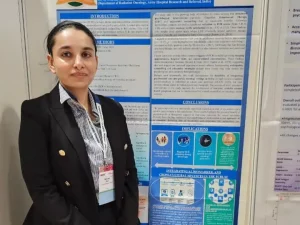Aspiring candidates preparing for the AFCAT (Air Force Common Admission Test) and CDS (Combined Defence Services) exams in 2024 are confronted with the intricate challenges of the Reasoning section. Among the diverse facets of Reasoning, Dot Situations emerge as a unique puzzle, demanding a profound understanding of visual patterns. This article delves into the intricacies of AFCAT-CDS 1 2024 Exam Reasoning – Dot Situations, shedding light on crucial concepts, problem-solving strategies, and the art of deciphering visual complexities.
Understanding Dot Situations
Essential Concepts of Dot Situations
1. Visual Arrangements: Understanding how dots are arranged visually and the significance of their spatial relationships.
2. Pattern Recognition: Recognizing patterns formed by dots and extending this understanding to solve complex situations.
3. Symmetry and Asymmetry: Understanding the role of symmetry and asymmetry in dot arrangements and their impact on the overall pattern.
4. Logical Connectivity: Applying logical connectivity to interpret the relationships between dots and unveil hidden structures.
Solving Dot Situations
In preparation for the AFCAT-CDS 1 2024 Exam, navigating Dot Situations involves the application of fundamental concepts.
Deciphering Visual Arrangements
Understanding how dots are arranged visually is fundamental. Candidates must discern the spatial relationships between dots, whether forming lines, shapes, or other configurations.
Extending Pattern Recognition
Recognizing patterns formed by dots within a given arrangement is pivotal. Extending this understanding allows candidates to predict the continuation of patterns and solve complex Dot Situations.
Navigating Symmetry and Asymmetry
The dynamics of symmetry and asymmetry play a crucial role in Dot Situations. Candidates must decipher how dots contribute to the overall symmetry or asymmetry of the arrangement.
Applying Logical Connectivity
Logical connectivity is the key to interpreting relationships between dots. Whether through straight lines, curves, or other logical connections, candidates must unveil the hidden structures within Dot Situations.
Strategies for Effective Dot Situations Problem Solving
1. Visualizing Spatial Relationships
Develop a knack for visualizing spatial relationships between dots. This spatial awareness is essential for interpreting the arrangement and making predictions.
2. Analyzing Pattern Continuity
Instead of viewing dots in isolation, analyze them in terms of patterns and sequences. This analytical approach aids in predicting the continuation of patterns and solving Dot Situations.
3. Understanding Symmetry Dynamics
Understand the dynamics of symmetry and asymmetry within dot arrangements. Whether dealing with mirrored patterns or asymmetric configurations, maintaining a grasp on symmetry dynamics is crucial.
4. Embracing Logical Connectivity
Logical connectivity is the glue that holds Dot Situations together. By embracing the logical relationships between dots, candidates can decipher the underlying structures and solve the puzzles effectively.
Visual Complexity in Dot Situations
Unraveling Hidden Patterns
Dot Situations often hide intricate patterns within seemingly random arrangements. Candidates must hone their ability to unravel these hidden structures and discern the logic behind them.
Predicting Spatial Configurations
The arrangement of dots contributes to the spatial configuration of the overall pattern. Successful candidates can predict how dots will continue to form shapes, lines, or other configurations within Dot Situations.
The Symmetry-Aware Solver
Adept solvers of Dot Situations are inherently symmetry-aware. They can identify symmetrical relationships between dots and anticipate how symmetry or asymmetry will unfold in the arrangement.
Logical Connectivity as the Guiding Thread
Logical connectivity serves as the guiding thread that weaves through Dot Situations. Candidates who grasp the logical relationships between dots can navigate through the visual complexity with precision.
Conclusion
Mastering Dot Situations in the AFCAT-CDS 1 2024 Exam Reasoning section is a journey of visual acuity, pattern recognition, and logical connectivity. This article has explored essential concepts, problem-solving strategies, and the holistic approach necessary for effective navigation of Dot Situations. As candidates delve into their preparation, a comprehensive understanding of visual complexities will undoubtedly contribute to their success in tackling this intricate facet of the Reasoning section. Best of luck to all aspirants as they navigate the challenges of the AFCAT-CDS 1 2024 Exam with confidence and a keen eye for visual arrangements.



















